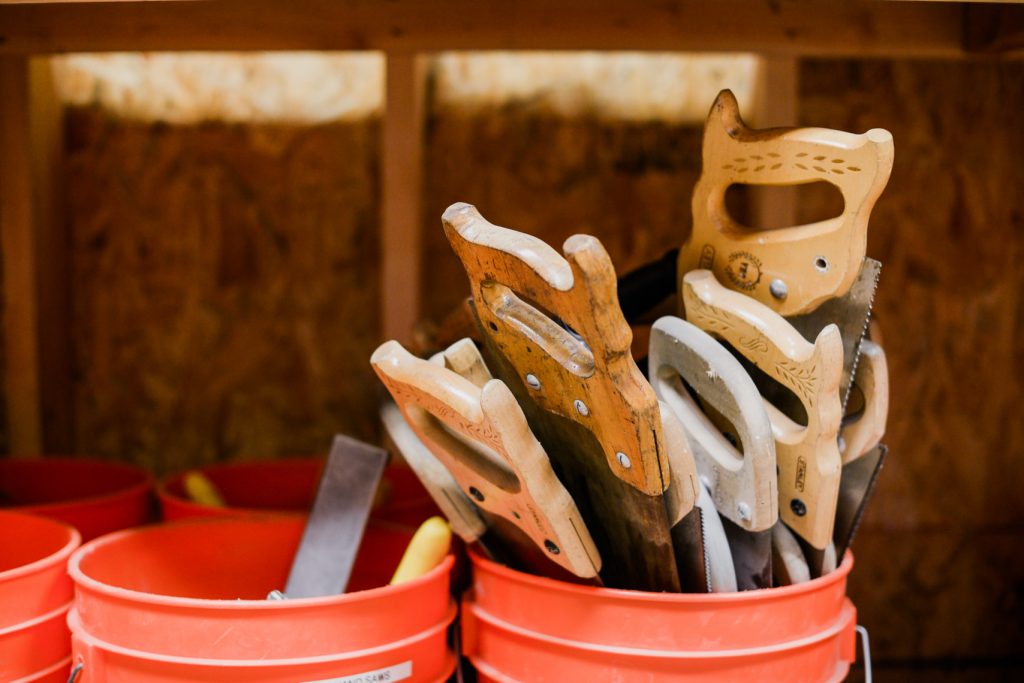HOPE BUILDERS BLOG
Closing the Skills Gap in Construction for the New Year

Nationally, more than 6.7 million youth, between the ages of 16 and 24, are both unemployed and out of school. These youth suffer high rates of chronic poverty, exposure to violence, and diminished health and well-being, contributing to a future lifetime taxpayer burden of $1.56 trillion.
In Orange County, Calif., more than 55,000 youth, ages 18 to 28, live in poverty and 11.5 percent of 20-24 year-old residents are seeking, but unable to find employment. Despite an eagerness to work, these youth lack access to career and education pathways. Meanwhile, many businesses struggle to find entry-level workers with the right skills and personal attributes to meet their workforce demands. Orange County’s construction industry is particularly impacted by an overwhelming labor shortage.
Hope Builders is trying to bridge this gap by training out-of-school and out-of-work young adults to fill middle-skill jobs. Since 1995, Santa Ana-based Hope Builders has served as a powerful broker between 18-28 year old young adults who face many barriers to employment, and employers who seek skilled, reliable workers.
Through a thorough vetting process, Hope Builders enrolls those who prove that they are motivated to change and enables them to achieve enduring personal and professional success. Through two years of training programs and services, Hope Builders simulates the workplace, reinforcing critical professional behaviors and providing: hard skills training in construction, healthcare and business applications, life skills and counseling, employment placement and retention support, and college credit with links to apprenticeships.
Accredited by the National Center for Construction Education and Research (NCCER), Hope Builder’s Construction program recruits young people and prepares them with the skills needed for entry-level work in the building trades. Training focuses on the fundamentals, incorporating: safety awareness and training, construction theory, adherence to attendance policies, mentoring, job coaching, and leadership development. Hands-on training includes framing, drywall installation, electrical and plumbing. Apprentices participate in two hours of daily math training, concentrating on the algebra, geometry and trigonometry needed for basic construction principles. Once the youth learn concepts in the classroom, they move to the lab for hands-on training, ultimately building a home from the ground up. Upon successful program completion, each graduate is certified with 10 hours of OSHA training and receives a state certification in Vocational Construction Technology from Rancho Santiago Community College District. The program is also a state-approved pre-apprenticeship program of the local Carpenter’s Union.
Hope Builders’ staff develops relationships with local businesses, serving as a free-of-charge placement agency that provides employers direct access to motivated workers with the technical job training and ongoing personal guidance that make them productive employees immediately and valuable assets for the long term.
Twenty years of data proves that the program works: 77 percent of youth who complete their skills training find employment; 72 percent retain employment for at least 12 months; 57 percent pursue a post-secondary certificate; and 5,100 lives have been transformed to date.
This year, Hope Builders will recruit and train 100 youth in its construction program. It is also expanding its training and opening it up to young people in other communities of great need in Anaheim, Calif. Local companies, such as Clark Construction, McCarthy Construction, PCL Construction, Bergelectric and RJ Noble, among others in the industry, stand behind the program, providing financial assistance and jobs to graduates. To find out more about Hope Builders and how you can help address the labor shortage in the local construction industry, visit www.tsjhopebuilders.org.
Read the full article at: http://bdmag.com/closing-the-skills-gap-in-construction-for-the-new-year/


 New Name
New Name